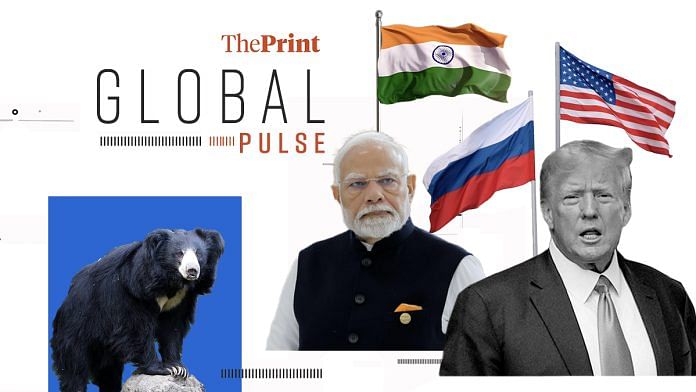New Delhi: Financial Times reports on the additional 25 percent tariff imposed by US President Donald Trump on India owing to its purchase of Russian oil. The extra tariff is on top of the existing 25 percent duty, bringing the total tariff to 50 percent.
“I determine that it is necessary and appropriate to impose an additional ad valorem duty on imports of articles of India, which is directly or indirectly importing Russian Federation oil,” said Trump.
“Trump’s move will widen the rift between the world’s two largest democracies, which have expanded their ties in defence and technology and had been nearing agreement on an interim trade deal just weeks ago,” warns the report, adding that the change in relations could also damage India’s credibility as it seeks to attract investment from “manufacturers like Apple”.
India, however, appears to be “digging in its heels and resisting pressure” to put a halt to its purchase of Russian oil, hoping that ultimately, the sanctity of the India-US relationship will prevail, says Shan Li in The Wall Street Journal.
“Political experts said that Indian Prime Minister Narendra Modi is calculating that Trump will decide that ties between the two countries are ultimately too critical to jeopardise in a trade spat. Many Indian experts believe that Trump is spotlighting the issue to gain short-term leverage in ongoing trade negotiations with New Delhi—and that he will drop it once a deal is signed,” according to the report.
The Economist in a report titled ‘If America goes after India’s oil trade, China will benefit’, notes that typically, unlike China, India refrains from “defying American sanctions”. And this time, the US could add “threats that any bank, port or firm facilitating Russian sales will be cut off from American finance”.
Eventually, India will be able to replace its Russian supply. But at the same time, China, which has built a system to “circumvent” threats and sanctions will be the final benefactor, says the report.
“India would probably manage to replace most of its current Russian supply, albeit at a higher cost (Urals crude currently trades at a $5-10 discount to other comparable grades). The margins of Indian refiners would be crushed. As they retreated from the market, the winners would be their Chinese rivals, which have been restocking fast in recent months, giving them plenty of firepower. Being less exposed to American sanctions, they would also continue to buy Russian crude—at a growing discount,” it adds.
In The New York Times, Anupreeta Das looks at what’s really at stake—if the rupture persists.
“For India, the costs of a damaged relationship may prove to be higher. Mr Trump’s move puts Prime Minister Narendra Modi in a bind. Russia is the source of 45 percent of its oil imports. If India stops buying Russian oil, accepting higher prices for consumers and domestic manufacturing, it would be politically damaging for Mr Modi’s government,” says the report.
Sophie Hardach profiles the sloth bear for BBC—the threat it poses as well as the threats posed to it.
“Sloth bears (named due to their long claws and teeth, supposedly resembling a sloth) which live in India, Nepal and Sri Lanka, are widely considered among the most aggressive animals on the Indian subcontinent,” says the report, adding that they charge “explosively” at both humans and tigers. They’re also a vital part of the forest ecosystem, it notes.
“One study counting large carnivore attacks on humans around the world between 1950 and 2019 found that sloth bear attacks outnumbered all other species, including tigers, lions, wolves and any other bears,” it states.
However, “sloth bears are also facing many threats themselves, from habitat degradation to retaliation by humans. Their population is declining, and they have been classed as a vulnerable species, with their global population estimated at fewer than 20,000”, it warns.
(Edited by Nida Fatima Siddiqui)
Also Read: US ‘unilateral hegemony’ or India’s ‘misplayed hand’? Global media analyses Trump-Modi chill






